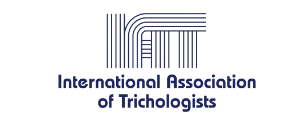
Meet the Experts: An Interview with David Salinger
David Salinger is a pioneering figure in the field of trichology and the Director of the International Association of Trichologists (IAT). With decades of experience, he has played a crucial role in shaping trichology education worldwide. We had the opportunity to speak with David about his journey, the evolution of trichology, and his advice for aspiring trichologists.
How did you first become interested in trichology?
My interest began in the early 1970s when hair and scalp health was a largely overlooked area of study. I saw a clear need for specialized knowledge to help people struggling with hair loss and scalp problems. This motivated me to work with medical experts to develop a structured training program that would raise professional standards in the field.
What was the biggest challenge in developing the IAT certification program?
One of the biggest challenges was creating a curriculum that balanced scientific rigor with practical application. We wanted to ensure that students not only understood the biology of hair and scalp but also gained hands-on skills to help their clients effectively. Collaborating with specialists at the University of Southern California was invaluable in achieving this balance.

How has trichology changed since the program was first introduced?
Trichology has evolved significantly with advances in technology, research, and treatment options. Today, trichologists have access to improved diagnostic tools, better understanding of genetic and systemic causes of hair loss, and more effective therapies. The core mission remains the same — to support healthy hair through education and professional care.
What advice would you give to those considering a career in trichology?
Stay curious, committed, and compassionate. Hair and scalp health deeply affect people’s confidence and well-being, so it’s a privilege to be part of their journey. Continuous learning and ethical practice are key to making a positive impact as a trichologist.
David Salinger’s dedication to trichology has helped build a global community of professionals who are passionate about hair health. His work continues to inspire new generations of trichologists committed to advancing this vital science.


